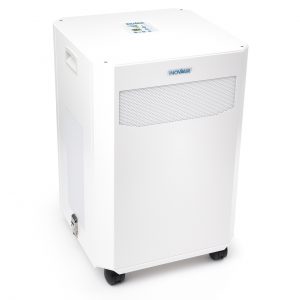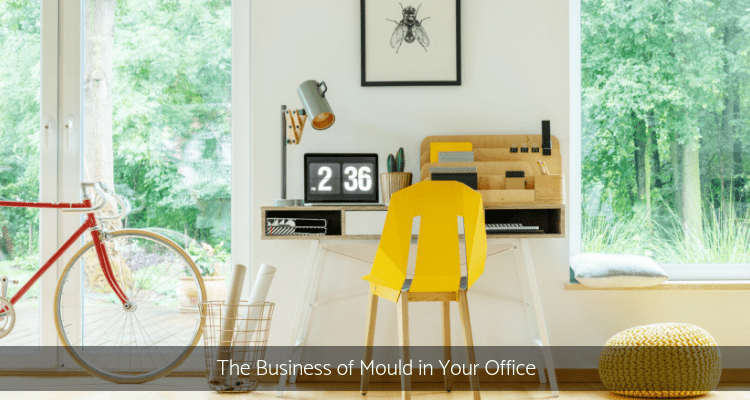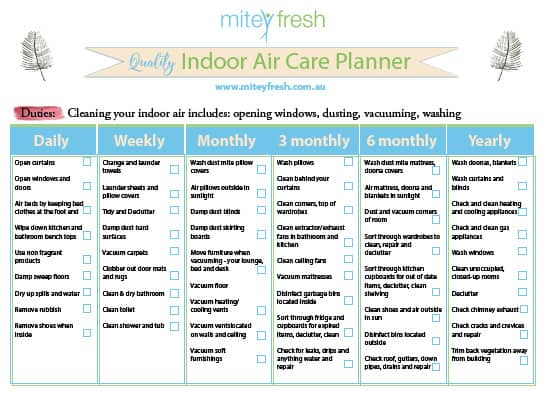Did you just move into your new office, or you’re preparing the board room for that all important client meeting and the place just doesn’t feel and smell right, or maybe you’ve thought it was a particularly bad cold and flu season amongst your staff, or are things more serious?
Either way, I am glad you’re here at Mitey Fresh – beginner’s guide to quality indoor air.
I created this page to highlight must see articles and info for indoor air quality managers. If you’re a quality air newcomer, I recommend you read through to the end of the page before deciding how to manage your building’s air.
The best thing you can do for your office is to be well educated. Being knowledgeable about quality air rarely has problems, and if you do, you know how to solve them.
Getting to Know Your Indoor Air
 Before I air information (yes, pun intended), you need to know what you’re up against. You need to understand some basic science. For instance, the words ‘air exchange’ is used as described, that is the ‘exchange of air’, and it’s vital that you understand this.
Before I air information (yes, pun intended), you need to know what you’re up against. You need to understand some basic science. For instance, the words ‘air exchange’ is used as described, that is the ‘exchange of air’, and it’s vital that you understand this.
Imagine when a new client enquires with your business and you ask them “what are your pain points, how have you been managing them?” They’d probably recite the issues they’re facing one after the other – it’s so easy, pointing them out, describing what they see is a problem and explaining how frustrated they feel about them – and of course they’d list what challenges they had and how they addressed them if they were able to at the time.
So why do so few staff feel, see and describe what is circulating in the indoor air in their office, and rarely address it?
Mainly because they’ve not asked enough questions. If you were informed, getting the right indoor air and solving issues with the quality would be a lot easier. Just take some time to get to know your indoor air.
Circulation
There are 3 fundamentals of indoor air quality: Circulation or air exchange, Cleaning and pollutants and Comfort and biology – in that order! Air exchange is often overlooked, but is the most important area of indoor air quality. A building and a room that has good circulation and air exchange will rarely have issues like odours and stuffiness, poor productivity and health.
One of the most popular questions I’m asked is how wide should I open my windows.
My answer: VERY WIDE!

However, ventilating may just not be enough, or in some work places, non-existent. So here’s a guide I put together to help figure out how you can ventilate for the best air exchange possible.
Cleaning
Biologically speaking, air circulation is cleaning. It’s the natural part of keeping spaces clean whether inside or outside. However, your office space needs some good old fashioned know how and elbow grease from your hygiene clean team. A room with good air circulation will need this less often, but your teams should do their part to keep introduced pollutants at a minimum.
Comfort
Last, but not least is comfort. This is the area of indoor air care that most people are unaware of, but you should. It’s actually PRODUCTIVE! There are a few key biology things you need to concern yourself about, and the rest is natural.
Before you go adding any assortment of cleaning care products, you and the hygiene clean team need to feel, smell and look at this indoor air. Testing your air is something you should do before switching on any HVAC systems or adding any air purifiers to the space at all. It’s very easy and you can do it any time.
Once you know what your ventilation, heating and cooling and cleaning materials are, you can start to take away or add materials or products and assessing how it affects the air and consideration for the staff and clients who are in this space.
How To Create An Indoor Air Quality Maintenance Schedule
After reading and watching the guides, you should have the confidence to take care of your indoor air without a worry. I know that throughout time with the indoor air you’ll have some questions, and that’s why I built this page. I’d like to make indoor air care easy, breathable and productive.
I created a handy and spiffy planner that highlights key areas of indoor air care. Feel free to print or bookmark on your web browser or add to your desktop calendar.
PRODUCT:
Indoor Air Care Planner
Print this handy indoor air care planner and put on your fridge so the whole family can help take care of the indoors this year.
If you want to make life easier, I cannot recommend an air purifier highly enough. Most of my working life I managed without one because we were able to open windows and doors and did not experience the same issues building occupants do today. We worked productively every day with the office space fully refreshed and so were we. Everyone likes being in a clean, fresh space, and air purifiers can help.
The Best Air Purifier Tips
Looking for the best air purifier? Look no further than our AWESOME list of, what I consider, are the best air purifier tips to look for in an air purifier.
PRODUCT:
Air Purifier
E20 PLUS includes an additional final stage 6kg carbon filter for applications requiring heavy duty chemical & odour removal. Excellent for removing pollution from main roads, smoke and mycotoxins produced by mould spores.

Where To Next?
I believe you should spend less time figuring out what to do (that is my job) and more time breathing easier, living easier, and I also see it’s a big picture that needs mastery.
As a Building Biologist, I acquired knowledge of adverse health effects and recommend effective strategies to reduce occupants’ exposure by eliminating and controlling as many sources of pollutants as possible.
I encourage you to have conversations about Quality Indoor Air and Air Purification, ask questions on the Mitey Fresh Facebook page, other people may well be wondering the same thing, and I will do my best to answer them there. So, what’s happening at your office? Call Now!
Towards healthier living Carol Parr ♥
As Building Biologists, we have acquired knowledge of adverse health effects and recommend effective strategies to reduce occupants’ exposure by eliminating and controlling as many sources of pollutants in order to create healthy indoor living environments that are as exposure-free and natural as practically possible.
References
WorldHealth Organisation. (2009). WHO Guidelines for Indoor Air Quality, Dampnessand Mould. (Online). Available: http://www.euro.who.int/__data/assets/pdf_file/0017/43325/E92645.pdf[6 August, 2015]
Wolverton,Dr B.C. 1996, How to Grow Fresh Air: 50 Houseplants that Purify Your Home orOffice, Weidenfeld & Nicholson, London.
Centre For Disease Control and Prevention. (2009). CDC – NCEH – Healthy Housing Reference Manual – Chapter 5: Indoor Air Pollutants and Toxic Materials. [online] Available at: https://www.cdc.gov/nceh/publications/books/housing/cha05.htm [Accessed 23 Dec. 2018].
Author
-
We’re glad you’re here. We’re Carol and Tony, founders of one of the longest running Healthy Home Blogs in the world, Mitey Fresh Australia. We’ve been on this journey for the last 25 years and are passionate about helping families sift through health hazards and triggers like allergens, mould, water damage, chemicals and EMFs, to get clarity about what’s toxic and what’s not so they can create a healthy and happy home for their family they love. Each month, people visit this blog seeking focus on the health and wellbeing of their loved ones, sustainable and effective practice tips and guides, to help create and manage healthier indoor spaces, improve the built environment that is pleasing to the senses and support healthy living and nature, every day. Starting this blog was to help change people’s lives, one family at a time, and we can’t wait to share how its allowed us to stand next to you and show you how interpreting these synergies between buildings and the environment they are built in will impact upon the health and well-being of those who occupy them. Find out more about Healthy Homes and what this blog can do for you!






